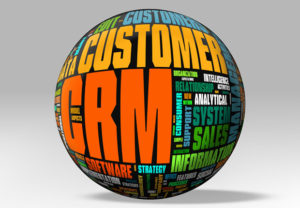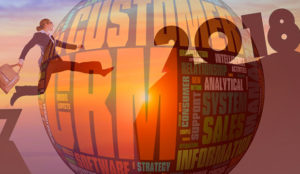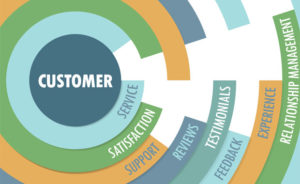“Customer experience” is the great watchword of 2018 — and it was a great watchword in 2017 and 2016, too.
Eighty-five percent of executives said that CX was important to their companies’ strategic priorities, in an Accenture survey.
Sixty-two percent of companies viewed CX delivered by contact centers as a competitive differentiator, Deloitte found.
Four out of five CX professionals predicted their brand would compete with rivals completely (or nearly completely) on CX by late 2019, Gartner reported.
Within businesses, there are metrics, surveys and evaluations aplenty when it comes to CX. The problem is that businesses seem to believe these experiences emerge from the ether and then project themselves onto the customers, which is both mystical thinking and mistaken thinking.
The reality is that the conduit of all CX is ultimately the employees — and if your employees aren’t having a good experience, there’s virtually no way they can deliver a good experience to your customers.
Murmurs of Discontent
How do we know that employee experience is getting short shrift?
Only 15 percent of employees were engaged, while 67 percent were disengaged and 18 percent were actively disengaged, according to A recent Gallup poll.
Fifty-one percent of employees were looking for a new job, Gallup found in another study.
Do those numbers suggest that employees are having good experience on the job?
I know what many of you may be thinking: Designing a great CX is hard enough, and now I have to design a great employee experience, too? Well, yeah, you do. There’s no way your plans to deliver great experiences to customer will work if they’re being delivered by disengaged employees.
Gallup’s numbers again speak to the benefits of having engaged employees: The best 25 percent of companies at engagement reported 17 percent higher productivity, 20 percent higher sales and 21 percent higher profitability than the worst 25 percent of businesses.
So where do you start? Well, if the CX is defined as the result of the entirety of the interactions a customer has with your business and your products, then employee experience is similar: the result of the entirety of the interactions the employee has with your business and your customers.
Experience Starts With Hiring
The first thing the employee experiences is the hiring process. Is your hiring process one that makes the candidate feel valued, or does it make clear the candidate will be just another cog in the machine? If it’s the latter, you’re starting the experience off wrong.
Is the employee on-boarded effectively or just thrown into the deep end and expected to swim? Does the employee get on-going training to help improve and see better results over time? These basic elements create the foundation for a good employee experience.
Tools to Do the Job
Next, you have to provide employees with the tools to do the job efficiently for the customer — but also in a way that isn’t difficult or cumbersome for the employees. For example, a customer support system that requires employees to bounce between multiple screens and applications slows their ability to provide assistance to customers, and it’s also no fun for the employees to negotiate — plus, it leads directly to less satisfied customers, again damaging the experience for the employees.
This can create some interesting new intersections between departments in your organization. Your IT department’s decisions may have a direct bearing on talent retention and, by extension, the HR department, for example.
Technology too often interfered with employees’ ability to help customers, a recent Dimensional Research study found. Agents had to access to just two or three systems in 58 percent of cases, although 35 percent of cases required four or more systems. Half the respondents said their jobs required them to weed through too much irrelevant information, and 41 percent said it took too long to find the right system for the case at hand.
Pathways to Success
One critical influence on the employee experience is their visibility about how their performance will influence their future with the organization. Are you providing them with a set of objectives, milestones and metrics that define what success will look like, or are you making success a moving target?
Ninety percent of support teams are metrics-driven, but only 20 percent of them feel those metrics correctly represent their performance, according to the Dimensional Research study.
Similarly, is the path to advancement within the organization clearly delineated? Are managers coaching employees toward those objectives, or is advancement seen as something arbitrary, based on managers’ whims?
If you’re giving employees doubts about their futures with the company, they will crowd out CX as their primary priority.
Empowered to Deliver Great Experiences
Employees charged with the responsibility of delivering great experiences to customers need to be free to do that. In too many cases, employees — especially in service and support roles — aren’t given the power to solve customers’ problems. That is not only a CX problem, but also an employee experience problem, because most of the people working in service sincerely want to solve the problems of the people calling them.
Agent empowerment manifests itself differently within different organizations. One of the more well-known examples is that of Ritz-Carlton Hotels, which enables agents to spend up to US$2,000 per customer to resolve issues.
Other companies have different approaches, ranging from free drinks offered by flight attendants to deviations from standard policies on financing in a B2B relationship.
The common denominator is that the agent is empowered to veer off the usual path for exceptional events in order to solve the problem. This helps the customer’s experience, of course, but it also makes employees feel like part of the experience solution instead of part of the problem. It allows them to internalize the trust their company has placed in them, and to enjoy their jobs more.
A good employee experience reflects a connection between an employee and an organization that indicates that the organization is sincere in what it coveys as its mission, and is committed to enabling its employees to execute on that mission. Since CX is becoming a business imperative for an increasing number of businesses, the time has come to begin focusing on employee experience as the foundation for great CX.
























































"Hey Chris, Thanks for the incredible value. As companies continue to strive for growth and profitability, prioritizing a better employee experience is the right place to start. A growing body of research shows that an engaged workforce is a key to better customer experience, so we can all agree that employee engagement is crucial. There are some links related to this topic that may be helpful:
https://www.tlnt.com/a-great-employee-experience-makes-for-a-great-customer-experience/ and https://www.navedas.com/employee-engagement-cx/"